NIL
Why ace NiJaree Canady transferred to Texas Tech
Dave WilsonMay 16, 2025, 07:00 AM ET Close Dave Wilson is a college football reporter. He previously worked at The Dallas Morning News, San Diego Union-Tribune and Las Vegas Sun. LUBBOCK, Texas — Last July, pitcher NiJaree Canady shook college sports when she announced her transfer to Texas Tech and landed the richest softball NIL […]

LUBBOCK, Texas — Last July, pitcher NiJaree Canady shook college sports when she announced her transfer to Texas Tech and landed the richest softball NIL deal ever.
The reigning USA Softball National Player of the Year bolted from the hallowed halls of Stanford, where she had become a superstar after piloting the Cardinal to two straight Women’s College World Series appearances, finishing in the final four teams both times. Her new home would be on the arid plains of West Texas at a school that had never won a conference title and had won just 49% of its games — and 31% of its league games since the advent of the Big 12.
The transfer was met with awe: The Matador Club, Texas Tech’s NIL collective, made a historic play for Canady, offering a one-year, $1,050,024 contract (a million for Canady, $50k for living expenses, $24 for her jersey number).
Just more than a month after Red Raiders coach Gerry Glasco — who was hired from Louisiana on June 20, three days after Canady had entered the portal and started lining up visits — arrived in Lubbock, he landed the most valuable player in the country. He did it by pulling out all the stops, including recruiting calls from quarterback Patrick Mahomes to Canady, a Kansan who is a devoted Kansas City Chiefs fan.
Glasco, who didn’t have much in the way of NIL in Lafayette, had suddenly walked into what he believed was the best softball situation in America. Two of the Matador Club’s biggest boosters — Tracy Sellers, a former Tech softball player, and her husband, John, an oil and gas executive and former Red Raiders football player under Mike Leach — had been supporting softball for years. They donated $11 million to the athletic department in 2022, with $1 million designated for softball stadium upgrades.
Glasco said he was told Canady’s agent was initially seeking $400,000, which he thought was low for her to leave Stanford, where she was already a budding legend.
“My message was: We’re talking about Bo Jackson. We’re talking about Herschel Walker,” Glasco told the Sellers. “We’re talking about a once-in-a-generation player that’s already made a name all over America. She’s a folk hero in our sport and she’s a sophomore.”
Tracy thought it was worth making a statement at Texas Tech, a place where Sheryl Swoopes became a superstar and where the highway outside Rocky Johnson Field is named for former Red Raiders women’s basketball coach Marsha Sharp. After meeting with the star pitcher, Sellers decided if anyone was worthy of such an emphatic statement about investing in women’s sports, it was Canady.
“She is a wonderful human being,” Sellers said. “We look at it as they deserve it just as much [as male athletes]. She worked so hard to be the No. 1 pitcher in the country. … I left that meeting and thought, this is who I would love to put a lot of effort into because of who she is.”
Canady knew the spotlight would come with the news, but she hopes it opens the door for those who follow her to reap the benefits.
“There are a lot of male athletes who get that and it’s not a headline anymore,” Canady said. “I hope that happens for women’s sports, too. I feel like it can be a pressure if you let it be, but honestly, I think it’s just a privilege. I hope someone tomorrow comes in and builds it even more.”
Looking back at the Sellers’ donation for the softball facilities, the same size investment in Canady had a greater transformative impact.
This year, the Red Raiders won their first Big 12 regular-season and conference titles while Canady led the nation with a 0.81 ERA. She went 26-5, racking up the second-most wins in a season in school history. She was named the Big 12 Pitcher of the Year. On Friday at 5:30 p.m. ET, No. 12 seed Texas Tech (45-12), hosting its first Lubbock Regional, will play Brown (33-15).
“She definitely put Texas Tech softball on the map,” Tracy said.
CANADY WANTS TO make one thing clear: There’s more to the story than just a giant deposit.
“I feel like people thought I heard the number and just came to Texas Tech, which wasn’t the case at all,” she said she considered Tech’s offer for more than a month before she committed. “If I didn’t feel like Coach Glasco was an amazing coach and could lead this program to be where we thought it could be, I wouldn’t have come.”
Glasco, 66, is a wildly successful late bloomer in the softball world who won five conference titles with six trips to the NCAA regionals in six seasons at Louisiana. He wasn’t hired until Canady had already entered the portal, so he had to make up ground quickly, because he wasn’t exactly in the sweepstakes in Lafayette. But he had a secret weapon: Glasco was friends with Jim Huecker, a former travel ball coach and Canady’s longtime coach. And he knew what Huecker knew: Canady missed hitting as much as she loved pitching.
Canady grew up in Topeka, Kansas, as a multisport star, including playing basketball and tackle football against boys. On her girls’ basketball team in high school, Canady averaged 20.6 points and 12.3 rebounds during her junior year, leading Topeka High to the Kansas 6A state finals while also being the two-time Kansas Softball Gatorade Player of the Year and leading the team to its first two state titles. She dominated in the circle, obviously, but also hit .478 with 13 homers as a junior and .530 with 42 RBIs as a senior. After hitting just 35 times in two seasons at Stanford, Canady wanted to get back to being an all-around athlete.
And Glasco, who directed record-setting offenses as an assistant at Georgia and Texas A&M, surprised Canady by making hitting a centerpiece of his presentation, which comprised a stack of handwritten stat sheets and charts.
“That’s my lineup,” Glasco said, holding up the same poster he used to pitch Canady. “If you look, I’ve got ’em all and I’m promising her how many runs I’m going to score. The coaches wanted to put it in Excel, make it nice, but I said, ‘No, no, no. I want it because NiJa has to trust me. If it’s in my handwriting, this is better than on a computer because it has to be personal.’ I believe that was important.”
On most visits, Canady spent the bulk of her time with pitching coaches. But in Lubbock, Canady was so interested that she spent more time on her visit meeting with Glasco than she did with Tara Archibald, Glasco’s daughter who serves as associate head coach and pitching coach.
“I think I talked to Coach Tara maybe 20-30 minutes about pitching and then the rest of the time was just Coach Glasco talking about hitting,” Canady said. “Afterward, I had to go back and talk to Coach Tara a little more just because Coach Glasco and I spent so much time just talking about hitting, going through different swings, watching videos. And that was definitely different just because other schools were obviously more focused on my pitching.”
When Archibald left her head coaching job at Eastern Illinois, where she went 40-17 last season, to join her father’s staff July 3, she couldn’t have imagined landing Canady. But first, she had to wait on her dad, who can spin a few yarns.
Glasco coached his three daughters: Tara, Erin and the late Geri Ann, a former Gatorade National Player of the Year who died in a 2019 car accident when she was a volunteer coach for him at Louisiana.
“This is why I think I could identify with her,” Glasco said. “All three of my daughters pitched and played and hit. And when you’re an athlete, the one thing you don’t want to be is a pitcher only. In our sport, the pitcher is so important, so we limit them. And I think that’s what she felt like in her college career. … She wants the opportunity.”
Despite dealing with a soft-tissue injury in March and being limited, Canady has 81 at-bats this year, batting .309 with five doubles and eight homers. She leads the team with a .457 on-base percentage, thanks to her 13 walks and being hit by a pitch 10 times. Still, she takes violent cuts, looking to send the ball into orbit any chance she gets.
“I’m definitely trying to hit the ball out,” Canady said. “And that’s Coach Glasco’s motto, too. He loves the long ball.”
CANADY SAID THERE wasn’t much culture shock going from Palo Alto to Lubbock. She is from Topeka, after all.
“Lubbock reminds me more of home,” she said.
The major difference, she said, has been the atmosphere in Lubbock. Located five hours from Dallas and six from Austin, it’s its own outpost in West Texas. The Red Raiders are a devoted bunch.
“I think that was the biggest shock to me, just about how much sports matter here in Texas,” she said. “I remember my first football game here and just seeing how many people were here, that was definitely different.”
That legendary arm has proved useful at Tech football games, where she has admitted to sneaking in tortillas and winging them down toward the field, a tradition in Lubbock.
“There’s a whole science behind getting it far,” she said. “You have to put a hole in the center. There’s a certain way to throw it.”
And it didn’t hurt that another Red Raider with a legendary arm has become a big fan and made his own recruiting pitch. Canady, a huge Chiefs fan, was shocked when Mahomes interrupted his vacation in Italy to call her on her visit.
“I’m not going to say any names, but another program had a very important person call me and there was no caller ID, so I couldn’t call him back or anything,” Canady said. “But Patrick Mahomes, I have his number, I can reach out to him. So I think that’s cool. Last July, we were eating lunch and had a beautiful view of the whole football stadium. Someone told me, just send a picture to Patrick to see if he responds. He’s preparing for the season and then I think within 10 minutes he got back to me.”
Canady has that kind of star power, and she’ll undoubtedly draw more players who want to play alongside her next year, with more time for Glasco to work instead of the quick-assembly project he put together last season. Glasco thinks this year’s Red Raiders team can take anyone to the wire because of Canady, but is confident he can contend for a national championship next year, if not this year.
“I’ve never coached anybody close to her,” he said. “I’ve never coached this kind of pitcher in college. It has a huge effect. It makes up for a lot of bad coaching mistakes, I’ll tell you that.”
The partnership impacted all parties involved. She says it was hard to leave Stanford, her teammates and coaches behind, and yes, that Stanford degree. But Canady’s dream is to coach kids and open her own facility — or facilities — and her family feels the money will help her get there quickly.
“She wants to teach little girls to hit,” Glasco said. “She loves little kids. You can see it when she signs autographs.”
And it doesn’t hurt to have the Sellers in her corner.
“Why would you not want people you love to succeed? And so same with NiJa. I would go into business any day with her,” Tracy said. “She’s a celebrity in Lubbock, Texas. It’s not just about money. I really hope that story gets out about her.”
NIL
Illinois 2026 recruit Mack Sutter commits to Alabama football
Alabama football recruiting: Watch Mack Sutter in Dunlap commit to Tide Mack Sutter, a four-star tight end from Dunlap, Illinois, on Thursday, June 26, 2025, committed to play for Alabama football. Sutter chose the Crimson Tide over Illinois, Ole Miss, and Ohio State. He is the No. 1 prospect in Illinois and the No. 80 […]

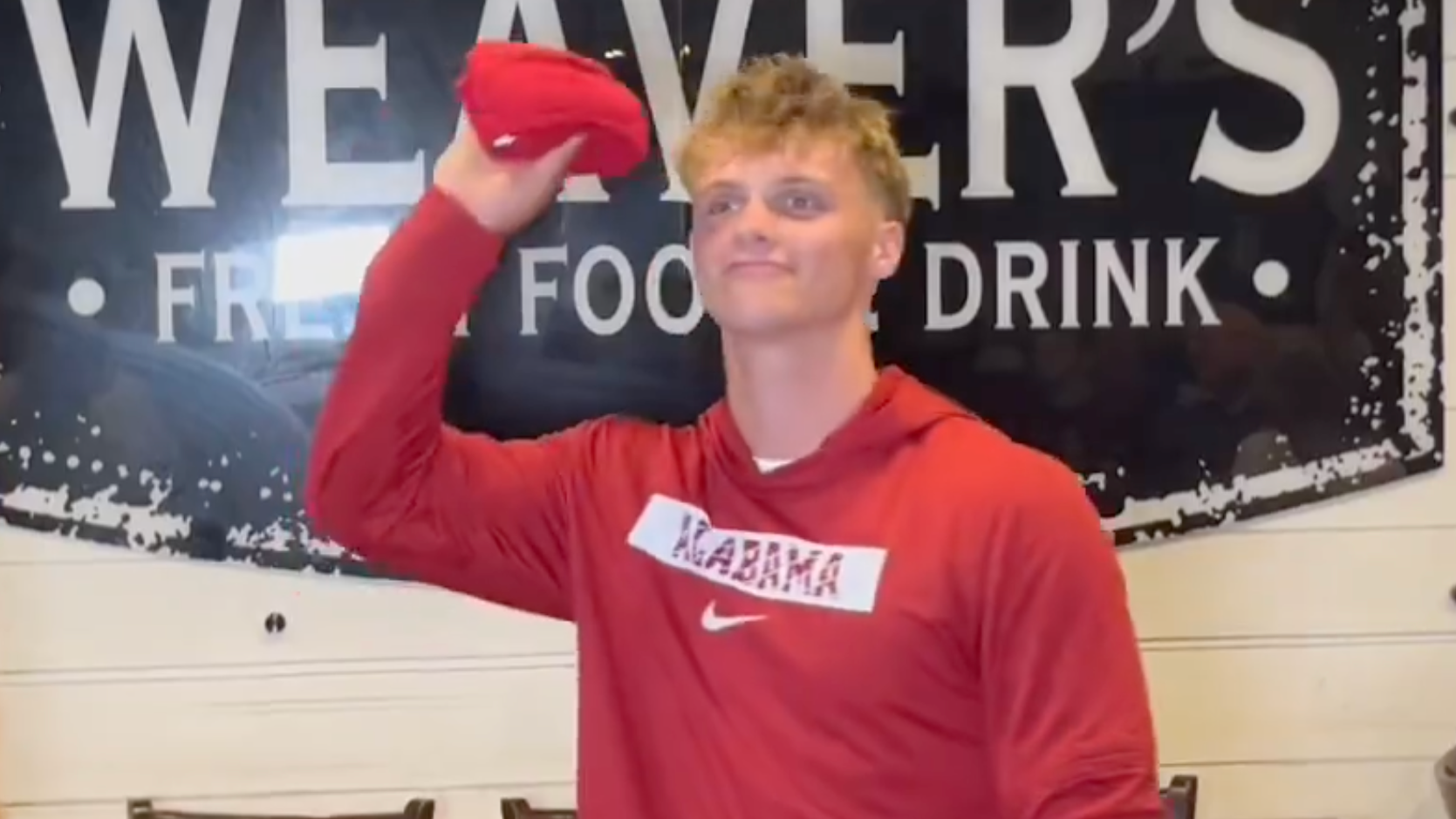
Alabama football recruiting: Watch Mack Sutter in Dunlap commit to Tide
Mack Sutter, a four-star tight end from Dunlap, Illinois, on Thursday, June 26, 2025, committed to play for Alabama football.
- Sutter chose the Crimson Tide over Illinois, Ole Miss, and Ohio State.
- He is the No. 1 prospect in Illinois and the No. 80 prospect nationally, according to 247Sports Composite.
- Sutter is the first tight end in Alabama’s 2026 recruiting class.
PEORIA — Roll Tide.
Dunlap four-star tight end Mack Sutter announced his commitment to Alabama on Thursday night before family and friends at Weaver’s Fresh Food and Drink.
Sutter thanks his teammates, coaches, friends and family before choosing the Southeastern Conference power over other finalists Illinois, Ole Miss and Ohio State. He then pulled on a maroon long-sleeved shirt before grabbing a few others and tossing them to the crowd.
“Thank you guys for pushing me every day. I’m so lucky to have a great group of guys to compete with every day,” Sutter said. “… Most of all, my parents, I am just so grateful for them. They’ve guided me and shaped me into the man I am today.”
The 6-foot-6, 225-pound senior-to-be made Alabama his final official visit on June 20. He’ll join the Tide’s 11-member recruiting Class of 2026 that features five-star cornerback Jorden Edmonds and four-star athlete Zyan Gibson.
Sutter becomes the first tight end, and the third highest-ranked Alabama commit in the class of 2026, ranking as the No. 80 prospect nationally, seventh-ranked tight end and the No. 1 prospect in Illinois by 247Sports Composite.
During the last 18 months, Sutter picked up 45 scholarship offers highlighted by a combined 30 offers from the Big Ten SEC. He is one of the most sought-after football recruits in Peoria-area history.
“Mack,” Dunlap football coach Brett Cazalet said, “the reason he had so many offers and so many opportunities is not only because of his physical traits, but also, when a coach sits down and talks to him for just a couple minutes and sees how he wants to be as a player, what kind of young man he is.
“Yeah, it’s a no brainer. You want a guy like that in your program.”
For Sutter, this most recent trip to Tuscaloosa came after he attended a pair of Alabama games during the 2024 season. He was at Alabama’s 41-34 win over Georgia in September, then attended the annual Iron Bowl against Auburn in November where Bama won 28-14.
“It was unreal,” Sutter told the Journal Star in December after attending the Egg Bowl and Iron Bowl on back-to-back days. “They were both pretty electric games, so it was sweet seeing that. … You could tell that it was big-time football down there.”
Sutter joins an Alabama tight end room that should be completely revamped heading into 2026, according to Colin Gay of the Tuscaloosa News. It could be headlined by returnees Marshall Pritchett and Kaleb Edwards, along with West Virginia transfer Jack Sammarco.
“At Alabama, tight end is a ‘developmental’ position, one where freshmen rarely see the field,” Gay wrote, adding that Sutter will “need to develop blocking SEC-level tackles before he sees significant playing time.”
Sutter and Dunlap will open the 2025 campaign on the road against Galesburg at 7:30 p.m. Friday, Aug. 29.
Adam Duvall is a Journal Star sports reporter. Email him at aduvall@pjstar.com. Follow him on Twitter @AdamDuvall.
NIL
ESPN Analyst Drops Truth Bomb For $3 Million NIL Valued College Football QB Ahead of 2025 Season
Greg McElroy is getting real about the impact of NIL on high school athletics. The ESPN analyst opened up about the weight of NIL expectations on young athletes like Michigan Wolverines’ five-star recruit Bryce Underwood. Underwood, who has an NIL valuation of $3 Million per ON3, possesses a first-hand experience with the changing landscape of […]
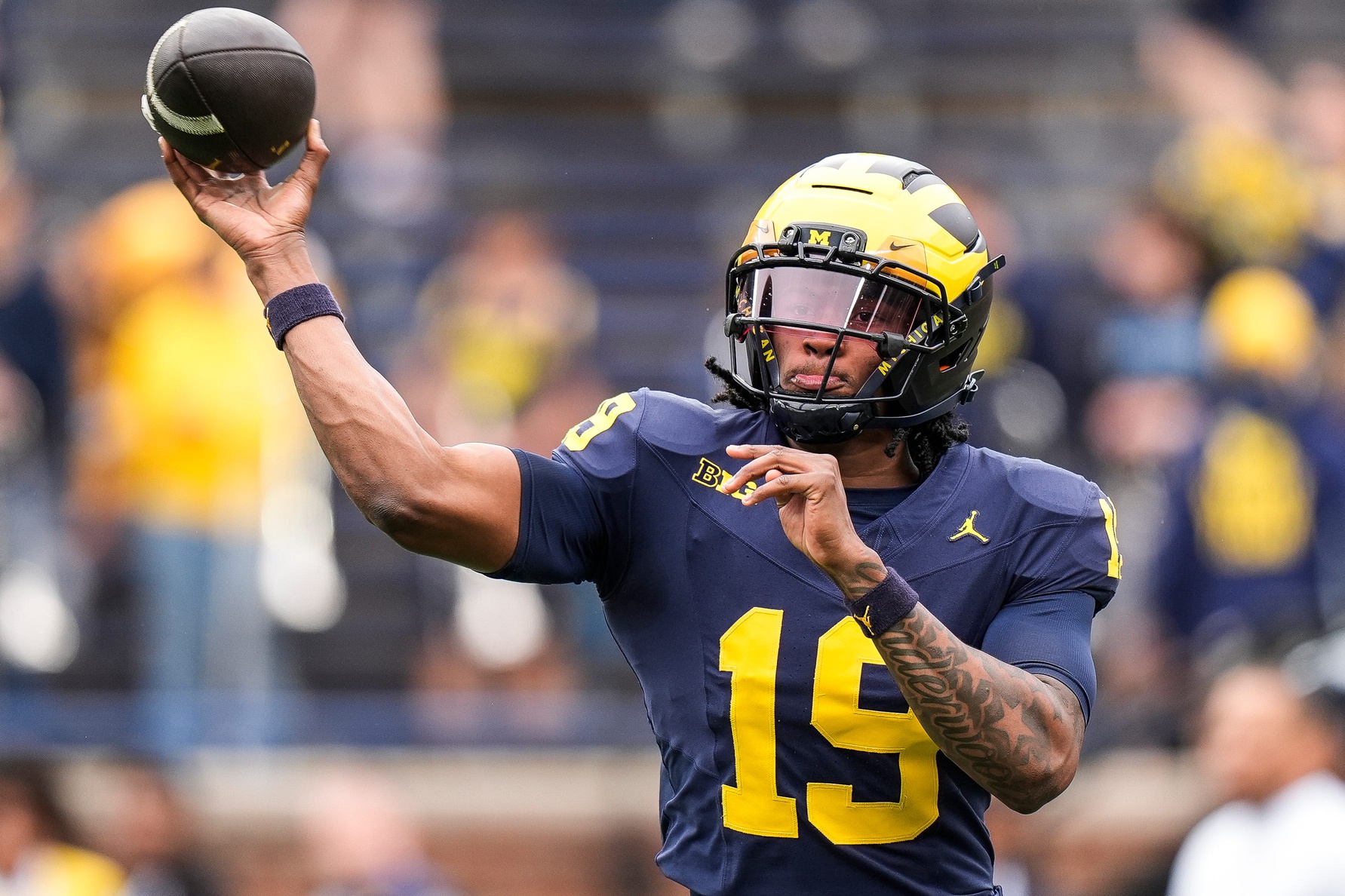
Greg McElroy is getting real about the impact of NIL on high school athletics. The ESPN analyst opened up about the weight of NIL expectations on young athletes like Michigan Wolverines’ five-star recruit Bryce Underwood.
Underwood, who has an NIL valuation of $3 Million per ON3, possesses a first-hand experience with the changing landscape of college athletics. He is the No. 1-ranked quarterback in the 2025 class and flipped his commitment from LSU after Michigan offered him an NIL deal reportedly worth $10.5 million over the next four years.
In an appearance on “Always College Football” on Thursday, McElroy discussed the increased pressure placed on high school athletes in the NIL age.
“I think Bryce Underwood is making a lot more money than pretty much everybody,” McElroy said. “But there’s been a handful of guys that have not lived up to the expectations and the weight of the NIL expectations, because I do think – now in the era of the NIL – the expectations are higher and the pressure is higher as well.”
Expectations are certainly high for Underwood. The Wolverines’ massive NIL package highlights their need for the nation’s top quarterback recruit.
Michigan had one of the worst offenses in the country last season and played to an 8-5 record after going undefeated the year before. The Wolverines had the 131st passing offense, something they will look to bounce back from with Underwood’s help.

What Bryce Underwood brings to Michigan?
Bryce Underwood joins the Wolverines as the No. 1 player in his class with a perfect 247Sports prospect score.
Underwood was a four-year starter at Belleville High School, where he led the Tigers to two Division I MHSAA State Championships in 2021 and 2022 and three consecutive appearances from 2021 to 2023.
In his senior season, Underwood accumulated 2,509 passing yards and 32 touchdowns with just six interceptions. He made 71.8 percent of his passes and scored six rushing touchdowns with over 600 yards.
Throughout his high school career, he racked up 12,919 all-purpose yards including 11,488 passing yards and 179 total touchdowns.
Underwood was a dominant force in high school and played his way into being the nation’s top recruit. He will look to transform Michigan’s offense with his impressive skill set. He will hopefully look to transform Michigan’s offense with his impressive skill set and abilities.
College Sports Network has you covered with the latest news, analysis, insights, and trending stories in football, basketball, and more!
NIL
LSU athletes can benefit from revenue sharing with new NIL rules
BATON ROUGE, La. (Louisiana First News) — When the LSU baseball team lifted its eighth championship trophy Sunday, it symbolized the end of a consequential era for college sports: the beginning of name, image and likeness (NIL). New rule changes will impact what it takes to stay atop the college sports world. Advertisement “You have […]

BATON ROUGE, La. (Louisiana First News) — When the LSU baseball team lifted its eighth championship trophy Sunday, it symbolized the end of a consequential era for college sports: the beginning of name, image and likeness (NIL). New rule changes will impact what it takes to stay atop the college sports world.
Advertisement
“You have to be able to adapt,” said Fritz Metzinger, a New Orleans sports attorney.
A House settlement earlier this month paved the way for revenue sharing. Under this new model, athletic departments will be able to spend up to $20.5 million on the people who drive a program’s success.
“Schools like LSU can now directly pay their student athletes,” Metzinger said.
That will add a new wrinkle to what has been possible since 2021, when the NIL era first began. For the last four years, athletes could only profit from endorsement deals. Metzinger said an “arms race” started to acquire top talent, and a “pay-for-play” system developed across college sports.
Advertisement
Groups called collectives stepped in to become fundraising arms for schools. At LSU, the collective is called Bayou Traditions. The money required to field top teams increased over the last four years, particularly in football and basketball.
“These collectives have become very powerful,” Metzinger said. “Local businesses that’re LSU supporters or Tulane supporters have thrown a lot of money at it.”
Baton Rouge attorney Gordon McKernan got in early.
“I signed (former LSU women’s basketball player) Alexis Morris,” McKernan said. “I think it was the first NIL deal at LSU. I don’t remember.”
McKernan signed many more athletes to deals, where they appeared on billboards, in commercials, and on social media posts. The money necessary to keep these players in Baton Rouge continued to rise.
Advertisement
“You’ve got to have the facilities, the tradition, all the winning and all that stuff is great,” McKernan said. “But you have to have the money, or they’ll go somewhere else.”
Under new changes, boosters will be relied on less. An athlete who signs any deals with a booster or collective will need to prove the deal isn’t a pay-for-play situation to a newly-created board, Metzinger said, as programs can use their own revenue for that money.
“I’ve been told they’re not going to ask me for as much, or other boosters, as well,” McKernan said. “Like, ‘hey, we’ve got more money now, we’re in a good spot.”
Athletes can still do third-party deals, which will be advantageous for businesses and athletes in a culture that has become increasingly star-powered.
Advertisement
“Any other businesses can pay any athlete whatever they want,” Metzinger said.
AJ’s Sports Cards on Drusilla Lane in Baton Rouge has been doing NIL signing deals with athletes, where they come to the shop and autograph memorabilia for fans.
“I think it’s good for the hobby,” said Nikki Erckert, AJ’s Sports Cards owner. “The little collectors get to meet their heroes.”
Erckert said the first NIL deal was with former baseball player Tre Morgan. The return on investment was immediately apparent.

“At least 150 people showed up to our very first in-person signing,” Morgan said.
The next AJ’s signing is Saturday, and it will feature members from the newly crowned LSU baseball champions. Erckert said that the signing was set up months in advance.

“A show that probably would’ve brought in about 500 customers…no telling what that’s going to look like now,” Erckert said.
Advertisement
Under the new rules, Metzinger said LSU is primed to continue to thrive athletically because of the business support, marketability and revenue opportunities.
Latest News
Copyright 2025 Nexstar Media, Inc. All rights reserved. This material may not be published, broadcast, rewritten, or redistributed.
For the latest news, weather, sports, and streaming video, head to Louisiana First News.
NIL
Big 12, Big Ten announce partnership with PayPal to payout revenue share to student-athletes
Colleges are preparing for revenue-sharing with student-athletes beginning on July 1st. In anticipation of that, the Big 12 and Big Ten have announced a new partnership with PayPal to pay out their student-athletes. Big 12 Commissioner Brett Yormark appeared on Get Up alongside PayPal CEO Alex Chriss. There, Yormark dove into what made the partnership […]
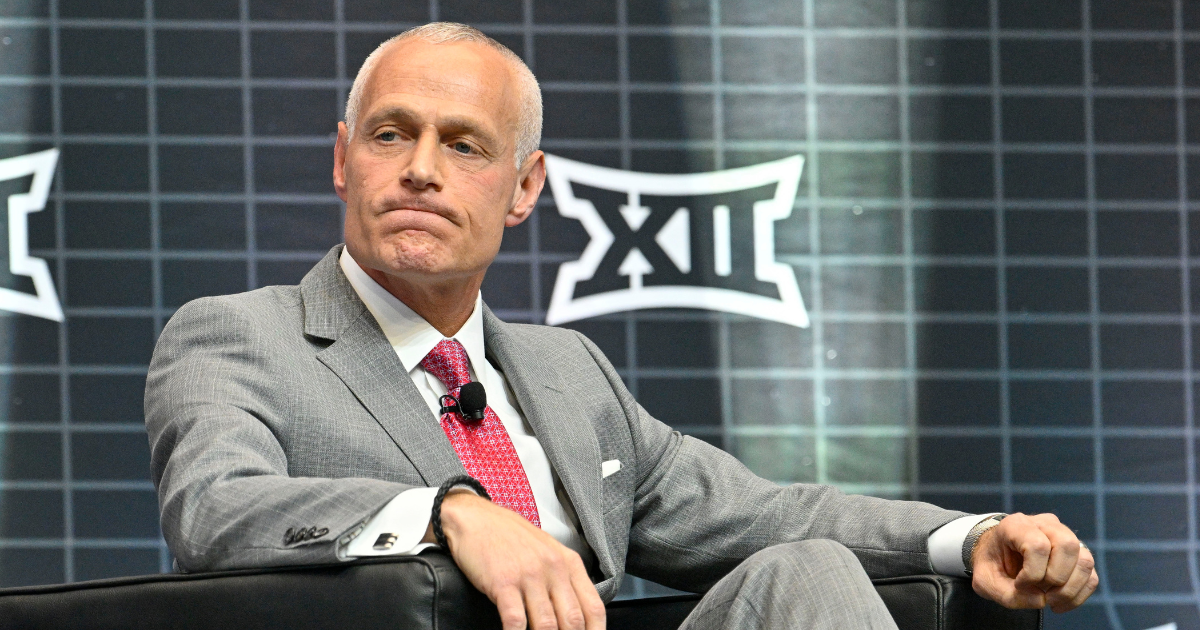
Colleges are preparing for revenue-sharing with student-athletes beginning on July 1st. In anticipation of that, the Big 12 and Big Ten have announced a new partnership with PayPal to pay out their student-athletes.
Big 12 Commissioner Brett Yormark appeared on Get Up alongside PayPal CEO Alex Chriss. There, Yormark dove into what made the partnership a good idea for the conference at this point in time.
“July 1 starts rev-share with our student-athletes,” Yormark said. “A long time coming and well deserved from a conference perspective, but I speak beyond just the Big 12. I speak for all of collegiate athletics; we need a reliable payment platform to distribute money to our student-athletes.”
Revenue-sharing stems from the recent House settlement. That is going to lead to several new changes to college athletics and NIL specifically. That includes third-party oversight over NIL, a new enforcement agency, and roster limits. Arguably most important, it also allows for revenue-sharing between schools and student-athletes, with each school being able to share $20.5 million annually.
“We’ve [Big 12 and PayPal] been at this for over 14 months,” Yormark said. “Trying to figure out if there was a place and a point of entry for PayPal in this world of collegiate athletics, and we found it on the heels of the [House] settlement and rev-share. Truly excited about it. When you think about PayPal and Venmo, probably the most culturally relevant payment platform globally. 100 million customers, including consumers and merchants. It’s a big opportunity for the Big 12. Big for college athletics and I truly believe that the product is ubiquitous across all campuses, and today, yes, we’re announcing two conferences, but it’s going to go well beyond that moving forward.”
Per Ross Dellenger, the Big 12 deal with PayPal is significant. It’s added value of about $100 million over five years, or ~$1M per school annually.
“PayPal and Venmo are the applications that college students are using now,” Alex Chriss said. “Over half of college students are using Venmo today, and it’s the ecosystem that they use. Their parents are giving them money. It’s how they’re paying for their pizzas. It’s the ecosystem of the economy of college students. Now, they’re able to get the payouts from revenue share, will be able to do NIL distributions. We’ll be able to give them a debit card. We’ll be giving debit cards with Venmo with their college logo on them. So, we’re enabling this whole ecosystem to work going forward.”
Ultimately, Yormark believes that this step by the Big 12 and the Big Ten is the first step to some uniformity in how student-athletes are paid. Only time will tell, but Alex Chriss is confident that PayPal and Venmo are the platforms to accomplish this.
“It really is,” Chriss said. “We’re in discussions with all the conferences. PayPal is the ecosystem. The easiest way to distribute these funds. You want to make it seamless and simple for student-athletes to be able to get their dollars in their wallet and be able to spend it, and PayPal is the right way to do it.”
NIL
Report: Florida State defends controversial rev-share contract language that concerned agents, rival GMs
Florida State released a statement to CBS Sports defending language in drafts of the school’s revenue-sharing contracts. The school addressed reporting from CBS Sports detailing controversial language, which concerned agents and rival GMs. FSU pointed out that individual situations will be “unique” as the revenue-sharing era gets underway in college athletics. Under the newly approved […]

Florida State released a statement to CBS Sports defending language in drafts of the school’s revenue-sharing contracts. The school addressed reporting from CBS Sports detailing controversial language, which concerned agents and rival GMs.
FSU pointed out that individual situations will be “unique” as the revenue-sharing era gets underway in college athletics. Under the newly approved House v. NCAA settlement — which will be implemented July 1 – schools will be able to directly share up to $20.5 million with athletes, and 75% is widely expected to go toward football.
“As we enter into a new age of collegiate athletics, Florida State has put together an agreement that provides deliverables and expectations for all parties,” Florida State’s statement to CBS Sports read. “Each individual situation will be unique and the hypotheticals are impossible to predict. However, we are committed to continuing to provide an elite experience for our student-athletes in all aspects of their collegiate career. Florida State is looking forward to the mutually beneficial partnerships with our student-athletes in this new era.”
In drafts viewed by CBS Sports, a clause said Florida State could unilaterally extend a player at the end of a contract without going through negotiations with them. Additionally, there’s a maximum $2,500 fine for the first offense is a player loses any team equipment, such as cleats, and the maximum fine for use of a controlled substance for the first time is $1,000.
The drafts also include a clause regarding breach of contract. It includes “illness or injury which is serious enough to affect the value of rights granted to the school,” CBS Sports reported. Florida State could either renegotiate or cancel a player’s deal at its discretion after any sort of injury, according to the way the clause is written. The language concerned rival general managers’ agents who spoke with CBS Sports.
“Some of the concepts are pretty standard,” an agent, who represents at least one player at Florida State, told CBS Sports. “But FSU is going about this far more aggressively than any school I’ve seen. I’m disappointed by the adversarial nature of these contracts.”
Judge Claudia Wilken approved the House v. NCAA settlement earlier this month, officially ushering in the revenue-sharing era in college sports. The cap is set at $20.5 million for the first year of the settlement, and that figure is expected to increase annually as part of the 10-year agreement.
While Florida State has not confirmed how it will distribute the rev-share funds, the Board of Regents paved the way for the university to do so. Many schools across the country are planning to share 75% of the funds with football, 15% with men’s basketball, 5% with women’s basketball and 5% with the remainder of the sports.
NIL
NBA Draft: Why it’s unlikely there’s a Jalen Brunson or Nikola Jokić in this year’s second round
Apologies to any NBA teams hoping they unearthed the next Draymond Green, Jalen Brunson or Nikola Jokić on Thursday night. The second round of this year’s NBA draft became unusually barren after many prospects returned to college to take advantage of a skyrocketing NIL market. Advertisement In the pre-NIL era, college basketball underclassmen routinely entered […]
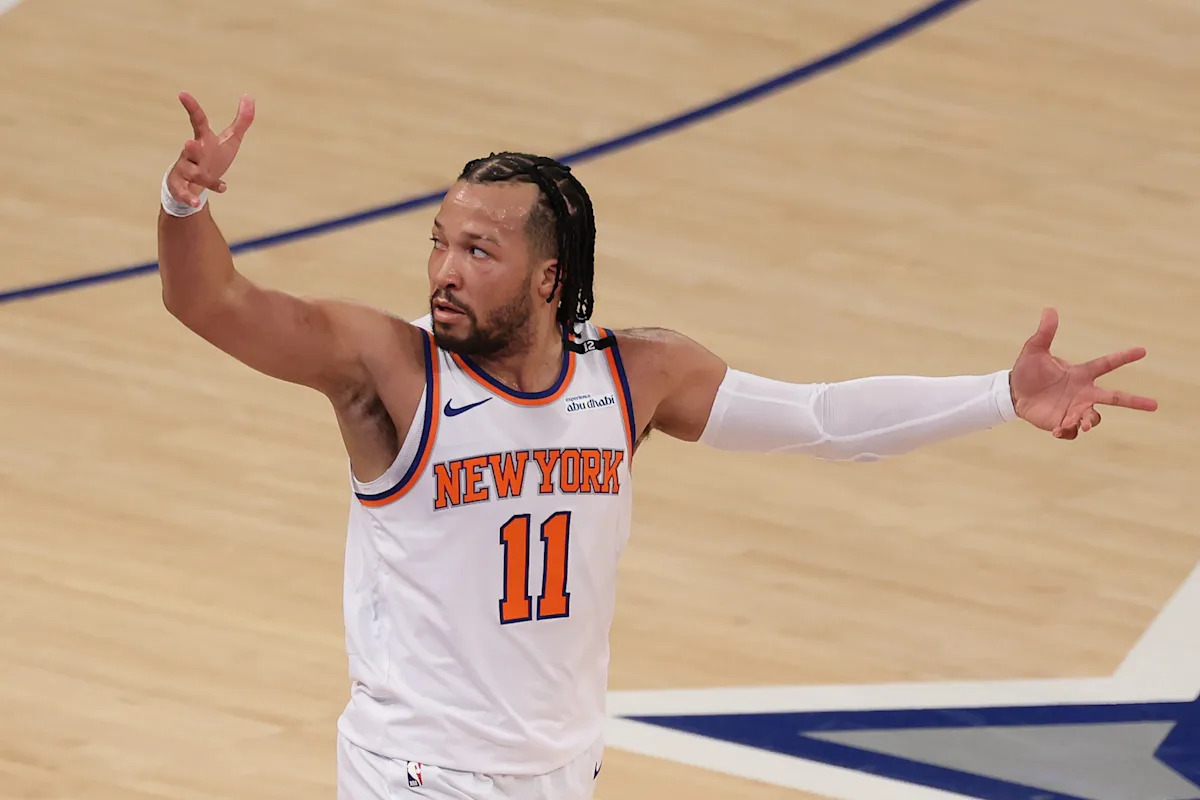
Apologies to any NBA teams hoping they unearthed the next Draymond Green, Jalen Brunson or Nikola Jokić on Thursday night.
The second round of this year’s NBA draft became unusually barren after many prospects returned to college to take advantage of a skyrocketing NIL market.
Advertisement
In the pre-NIL era, college basketball underclassmen routinely entered the NBA Draft even if they were projected to slip to the second round or go unselected. They earned more money chasing an NBA two-way contract or an overseas payday than they could returning to a college model where the only payouts came under the table.
The calculus began to change in 2021 when a series of court rulings forced the NCAA to allow athletes to benefit financially from their name, image and likeness without fear of penalty. This spring, underclassmen who were fringe NBA prospects returned to college in record numbers because deep-pocketed college programs were willing to pay them as much as $3 million to $4 million per year.
Only 106 players entered the 2025 NBA Draft as early entry candidates, the lowest number since 2015 and down from a peak of 353 in 2021. More than half those 106 early entrants then withdrew from the draft before the NBA’s deadline — even some who might have been selected in the 20-45 range this week.
Advertisement
Texas Tech’s JT Toppin, Florida’s Thomas Haugh, UConn’s Alex Karaban, Duke’s Isaiah Evans and Purdue’s Braden Smith and Trey Kaufman-Renn were among the prominent college stars who did not even test the waters this spring. Alabama’s Labaron Philon, Kentucky’s Otega Oweh and Auburn’s Tahaad Pettiford withdrew from the draft just before the May 28 deadline for underclassmen to make their decisions. So did Houston’s Milos Uzan, Florida’s Alex Condon, Michigan’s Yaxel Lendeborg and San Diego State’s Miles Byrd.
“This year’s draft class, more than any ever, has been affected by the NIL and affected by the new pay-for-play,” Boston Celtics general manager Brad Stevens told NBC Sports Boston last month. Stevens added that the absence of the prospects who returned to college would be felt in “the back end of the draft and even into the late first.”
That much was apparent from which players were selected on Thursday night. Ten of the first 14 to come off the board played at least four years of college basketball. Many were fifth-year seniors with no college eligibility remaining, from Duke’s Sion James, to Auburn’s Johni Broome, to Florida’s Alijah Martin, to Tennessee’s Chaz Lanier.
Advertisement
The deeper the second round progressed, the fewer NBA-caliber options remained. How often would a player like little-known Liberty catch-and-shoot specialist Taelon Peter get drafted in previous years? Or French wing Mohamed Diawara, who at 20 years old averaged a modest 5.8 points and shot sub-30% from behind the arc for Cholet this past season?
The good news for NBA teams is that the dearth of second-round talent could be a short-term problem. Some prospects who returned to college this year will exhaust their eligibility by 2026. Others could have more incentive to chase NBA money in the future.
The House vs. NCAA settlement puts a cap on how much colleges are allowed to pay athletes via revenue sharing and calls for the establishment of a new enforcement entity responsible for stamping out the pay-for-play deals that have dominated the NIL era of college sports. Athletes are required to submit to the new NIL Go clearinghouse all third-party NIL deals that exceed $600. The clearinghouse then must determine which deals are for a valid business purpose and are within a “reasonable range of compensation” and which are simply a recruiting incentive.
Advertisement
How will the clearinghouse determine which deals are circumventing NIL rules and which are legitimate? Nobody knows. Nor does anyone know whether the clearinghouse’s decisions will hold up in court against a legal challenge.
The answers to those questions will determine whether future fringe NBA prospects turn pro as quickly as possible or keep returning to college in record numbers.
That trend will only continue if the seven-figure NIL money is still available.
-

 Motorsports2 weeks ago
Motorsports2 weeks agoNASCAR Weekend Preview: Autódromo Hermanos Rodríguez
-

 Motorsports2 weeks ago
Motorsports2 weeks agoNASCAR Through the Gears: Denny Hamlin has gas, a border needs crossing, and yes, that’s a Hemi
-

 Motorsports2 weeks ago
Motorsports2 weeks agoNASCAR Race Today: Mexico City start times, schedule and how to watch live on TV
-

 High School Sports3 weeks ago
High School Sports3 weeks agoHighlights of the Tony Awards
-

 Health2 weeks ago
Health2 weeks agoGymnast MyKayla Skinner Claims Simone Biles 'Belittled and Ostracized' Her amid Riley …
-
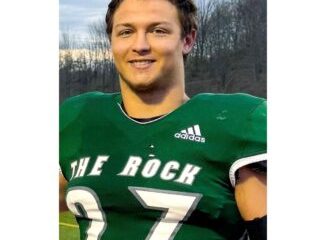
 Health3 weeks ago
Health3 weeks agoParents Create Fund in memory of son, raise awareness about suicide and mental health
-

 Professional Sports3 weeks ago
Professional Sports3 weeks agoUFC 316
-

 NIL2 weeks ago
NIL2 weeks agoTennessee law supersedes NCAA eligibility rule
-

 Sports2 weeks ago
Sports2 weeks agoCoco Gauff, The World's Highest
-

 College Sports3 weeks ago
College Sports3 weeks agoFisk to discontinue history-making gymnastics program after 2026 | Area colleges




 Stephen A. is OVER THE MOON after Knicks’ OT comeback
Stephen A. is OVER THE MOON after Knicks’ OT comeback  | First Take
| First Take






























